Teaching strategies for special needs students require tailored approaches to meet diverse learning requirements, ensuring inclusive education and empowering educators to support students effectively and compassionately.
Understanding the Importance of Inclusive Education
Inclusive education ensures all students, regardless of their abilities, receive equitable learning opportunities. It fosters a supportive environment where diversity is valued, and barriers to learning are addressed. Recognizing the unique needs of each student, inclusive education promotes social interaction, academic growth, and emotional well-being. By adopting strategies like differentiated instruction and assistive technologies, educators create a classroom culture that encourages participation and success for all. Inclusive education not only benefits students with special needs but also enriches the learning experience for their peers, preparing everyone for a diverse and interconnected society. It is a cornerstone of modern education, driving equality and empowerment.
Overview of Special Educational Needs (SEN)
Special Educational Needs (SEN) encompass a range of learning, emotional, and physical difficulties that require targeted support. Understanding SEN is crucial for creating inclusive environments where each student’s unique challenges are addressed. Early identification and intervention are key to ensuring students receive appropriate accommodations. Strategies like differentiated instruction and assistive technologies play vital roles in helping SEN students achieve their potential. Educators must be equipped with the knowledge and tools to provide individualized support, fostering independence and confidence. By addressing SEN effectively, we ensure all students have the opportunity to thrive academically and socially, benefiting their overall development and future success.
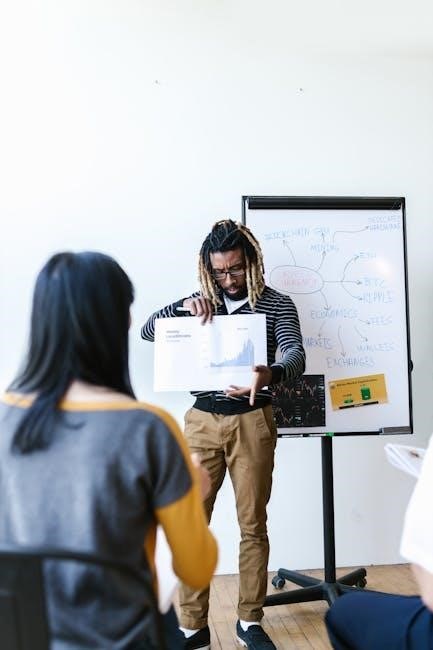
Differentiated Instruction
Differentiated instruction tailors teaching methods to meet individual learning needs, ensuring all students, including those with special needs, engage effectively with the curriculum and achieve their goals.
Curriculum Adaptation for Diverse Learners
Curriculum adaptation involves modifying content, processes, and products to meet the unique needs of diverse learners. This approach ensures that students with special needs access the same curriculum as their peers. Strategies include simplifying complex concepts, using visual aids, and incorporating assistive technologies. Task analysis is a key method for breaking down complex skills into manageable steps. Additionally, incorporating students’ interests and strengths enhances engagement. Adaptations may also involve alternative assessments to measure understanding. By tailoring instruction, educators create an inclusive environment where all students can achieve their learning goals, fostering academic and personal growth. This ensures equitable opportunities for success.
Assessment Modification for Special Needs Students
Assessment modification involves tailoring evaluation methods to meet the unique needs of special needs students. This ensures fair and accurate measurement of their learning. Strategies include offering alternative formats, such as oral exams or visual assessments, and allowing extra time for completion. Assistive technologies, like text-to-speech tools, can also facilitate participation. Simplifying language and providing one-on-one testing environments can reduce anxiety. Modifications may also involve portfolio assessments or project-based evaluations. These adjustments ensure that assessments are accessible and meaningful, enabling students to demonstrate their knowledge and skills effectively. This approach promotes equity and supports individualized learning goals.
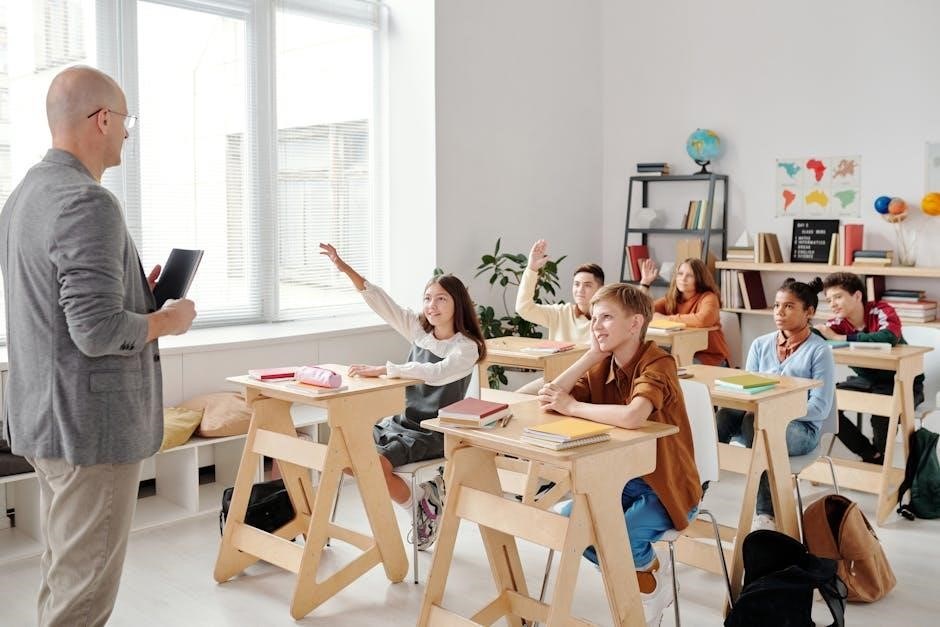
Co-Teaching Models in Inclusive Classrooms
Co-teaching models involve collaboration between special and general educators, providing varied instructional strategies and enhanced support for students with special needs in inclusive settings.
Collaborative Teaching Approaches
Collaborative teaching approaches involve teamwork between special and general educators to plan and deliver instruction, ensuring tailored support for students with special needs. These approaches, such as co-teaching, allow for varied instructional strategies, enhanced academic engagement, and improved learning outcomes. By sharing responsibilities, educators can address diverse needs more effectively, fostering an inclusive classroom environment. Collaborative methods also promote professional development, as teachers learn from one another’s expertise. This teamwork ensures that students receive consistent support, while teachers benefit from shared resources and perspectives, creating a cohesive and effective educational experience for all learners.
Benefits of Co-Teaching for Special Needs Students
Co-teaching offers numerous benefits for special needs students, including enhanced academic support and personalized instruction. By combining the expertise of special and general educators, co-teaching provides a collaborative learning environment that caters to diverse needs. Students receive more individualized attention, which can improve their understanding and engagement with the curriculum. Additionally, co-teaching fosters a structured and inclusive classroom setting, promoting social interactions and reducing barriers to learning. This approach also encourages the integration of assistive technologies and behavioral support strategies, further empowering students to succeed. Overall, co-teaching enhances the educational experience, leading to improved academic and social outcomes for students with special needs.
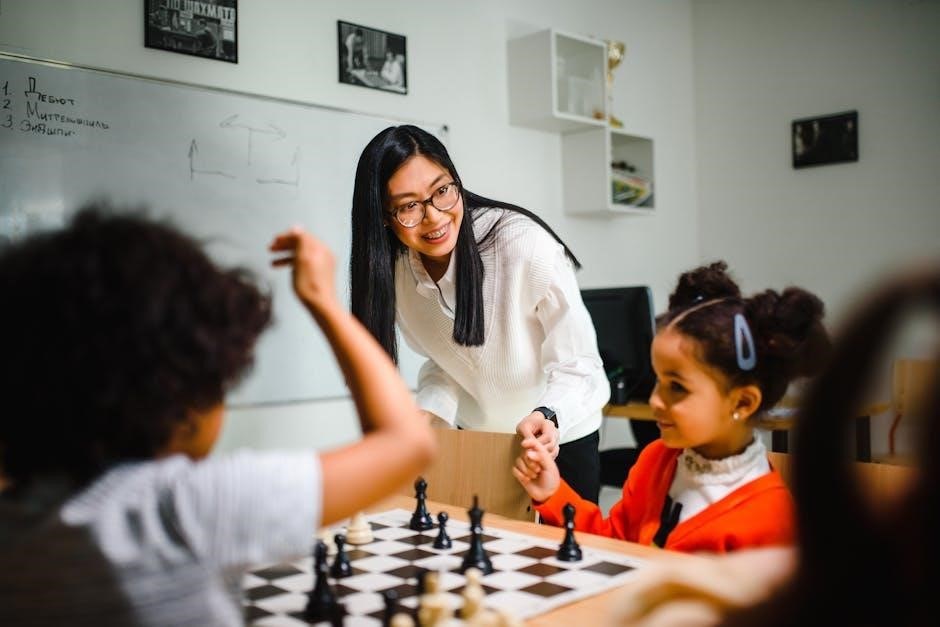
Behavioral Interventions and Classroom Management
Behavioral interventions and structured classroom management strategies support special needs students by minimizing disruptions and fostering a focused learning environment, ensuring academic and social growth through positive reinforcement techniques.
Positive Behavioral Support (PBS) Strategies
Positive Behavioral Support (PBS) strategies focus on creating a supportive environment that encourages desired behaviors while minimizing challenging ones. These strategies involve identifying triggers, teaching alternative behaviors, and reinforcing positive actions through rewards or acknowledgment. PBS emphasizes understanding the underlying causes of misbehavior and addressing them proactively. By fostering a structured and predictable classroom setting, PBS helps students with special needs develop self-regulation skills and social competence. This approach aligns with inclusive education goals by promoting a culture of respect and empathy, ensuring all students can thrive academically and socially. PBS also encourages collaboration between teachers, parents, and guardians to maintain consistency in behavioral support across settings.
Creating a Structured Learning Environment
A structured learning environment is essential for students with special needs, providing clarity and consistency that fosters academic and behavioral success. This involves establishing clear routines, visual schedules, and defined expectations to reduce anxiety and promote predictability. Organizing the physical space with designated areas for specific activities, such as learning zones or calming corners, helps students navigate their surroundings confidently. Implementing consistent rules and consequences, coupled with positive reinforcement, creates a safe and orderly classroom atmosphere. Structured environments also encourage active participation and focus, enabling students to thrive emotionally and academically. This approach is fundamental for meeting diverse needs and ensuring an inclusive educational experience;

Assistive Technology in Special Education
Assistive technology enhances accessibility, offering tools like text-to-speech software and adaptive devices to support diverse learning needs and promote independence for students with disabilities.
ICT Tools for Students with Disabilities
ICT tools play a vital role in supporting students with disabilities by providing customized solutions to meet their unique needs. Text-to-speech software aids those with reading difficulties, while speech-to-text tools assist students who struggle with writing.
Interactive simulations and virtual reality environments help students with complex learning challenges engage with content in immersive ways. Additionally, mind mapping software and organizational apps help students with learning disabilities structure their thoughts and manage tasks effectively.
Such tools not only enhance academic engagement but also foster independence and confidence, ensuring inclusive education for all learners.
Adaptive Hardware and Software Solutions
Adaptive hardware and software solutions are essential for creating an inclusive learning environment for students with disabilities. These tools are specifically designed to meet the diverse needs of learners, ensuring accessibility and engagement.
Adaptive hardware includes devices such as specialized keyboards, joysticks, and touchscreens, which accommodate physical or motor skill challenges. Software solutions, like screen readers and voice recognition programs, assist students with visual or auditory impairments.
These technologies not only enhance academic participation but also foster independence and confidence. By integrating adaptive tools, educators can ensure that all students have equal opportunities to succeed and thrive in their educational journey.
Academic Instruction for Students with Learning Disabilities (LD)
Academic instruction for LD students focuses on preparation, organization, and task analysis to break down complex objectives into manageable steps, enhancing understanding and skill mastery effectively.

Preparation and Organization Strategies
Preparation and organization are critical for students with LD, ensuring structured lesson plans and clear expectations. Teachers should provide visual aids, graphic organizers, and simplified instructions to enhance understanding. Breaking tasks into smaller, manageable steps using task analysis helps students grasp complex concepts. Offering hands-on activities and pair interactions fosters engagement and collaborative learning. Additionally, distributing outlines of material presented in class allows students to follow along and reference key points. These strategies create a supportive environment, enabling students with LD to stay focused, build confidence, and achieve their academic goals effectively. Consistent routines and clear communication further promote independence and success.
Task Analysis for Complex Learning Objectives
Task analysis is a powerful strategy for breaking down complex learning objectives into manageable, sequential steps. This approach helps students with LD by making abstract concepts concrete and actionable. By identifying key skills and sub-skills, teachers can create structured lesson plans that build upon prior knowledge. Task analysis also enables the use of physical guidance and visual supports, ensuring students understand expectations. This method reduces anxiety and frustration, allowing learners to focus on mastering one step at a time. Regularly reviewing and reinforcing each task promotes retention and confidence, making complex objectives achievable and fostering a sense of accomplishment for students with LD.
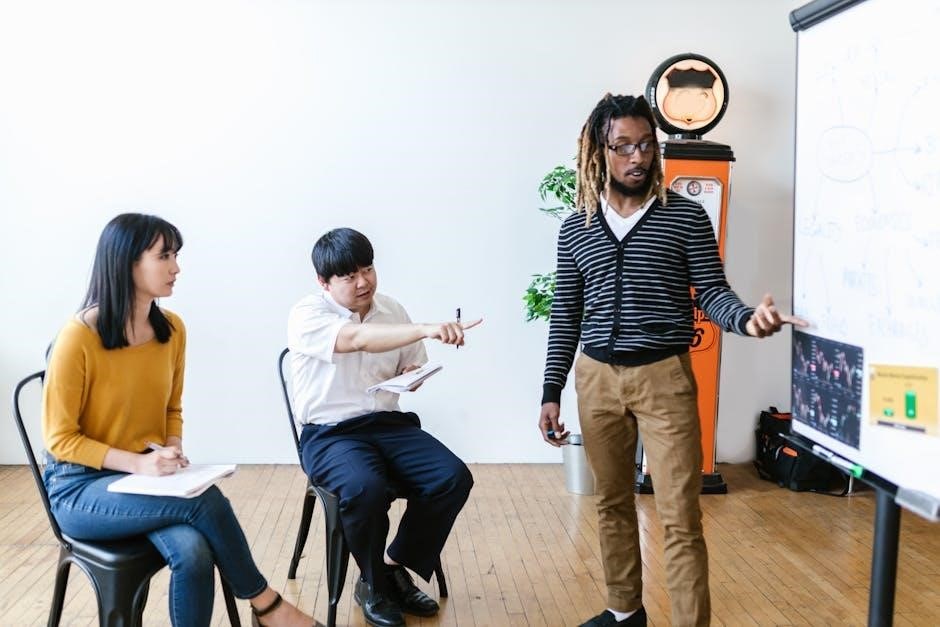
Language Arts, Math, and Science for Students with Severe Disabilities
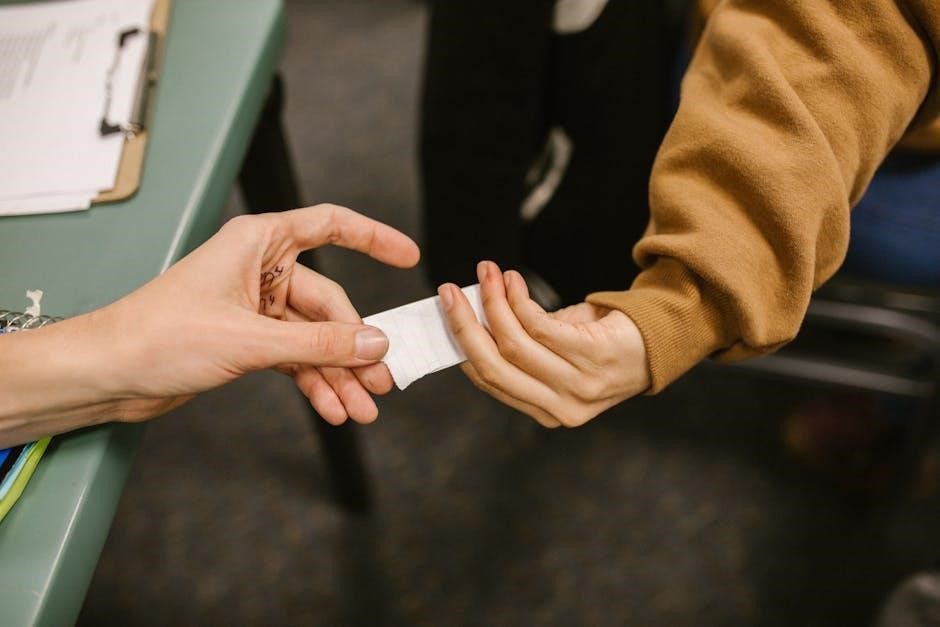
Adapting core subjects like language arts, math, and science involves tailoring instruction to meet individual needs, focusing on functional skills and promoting engagement through multisensory activities.
Adapting Core Subjects for Inclusive Learning
Adapting core subjects like language arts, math, and science for students with severe disabilities involves modifying content to align with individual learning needs and abilities. This ensures access to the general curriculum while fostering meaningful participation. Strategies include breaking down complex concepts into manageable steps, incorporating visual aids, and using assistive technologies to enhance understanding. Functional skills, such as communication and problem-solving, are integrated into lessons to promote real-world application. Additionally, interactive and hands-on activities are employed to engage students and cater to diverse learning styles. By tailoring instruction, educators create an inclusive environment that supports academic and personal growth for all learners.
Functional Skills Development in Academic Areas
Functional skills development in academic areas focuses on equipping students with disabilities with practical abilities that connect to real-life scenarios. Educators integrate life skills into core subjects like math, language arts, and science by simplifying tasks and linking them to daily activities. For instance, math skills may involve counting money or measuring ingredients, while language arts might focus on functional communication. These strategies ensure students gain independence and apply learning beyond the classroom. Assistive technologies and hands-on activities further support this approach, making education meaningful and relevant to their future lives. This integration enhances engagement and prepares students for independence and success in various life settings.
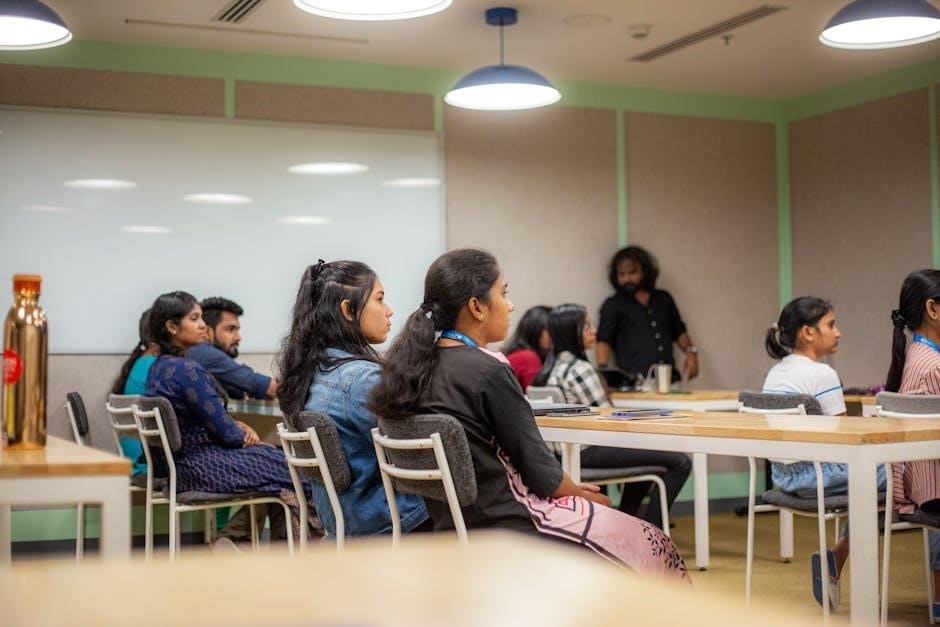
Building on the Strengths of Students with Special Needs
Building on students’ strengths fosters confidence and engagement, leveraging their interests and abilities to enhance learning and personal growth in inclusive educational settings effectively.
Identifying and Leveraging Student Interests
Identifying and leveraging student interests is crucial for engagement, as it personalizes learning experiences and makes them more meaningful. By understanding individual preferences and strengths, educators can tailor activities to align with students’ passions, enhancing motivation and participation. This approach fosters a deeper connection to the curriculum, especially for students with special needs, who may benefit from targeted strategies that cater to their unique interests. Incorporating visual aids, technology, or hands-on tasks can further enrich these experiences. Recognizing and utilizing students’ interests not only boosts academic performance but also nurtures their confidence and independence, creating a supportive and inclusive learning environment.
Promoting Self-Esteem and Independence
Promoting self-esteem and independence is essential for students with special needs, fostering their confidence and ability to thrive in educational and social settings. Educators can encourage self-esteem by providing positive reinforcement, celebrating small achievements, and creating opportunities for students to make choices. Structured routines and clear expectations also help students feel secure and capable. Independence is nurtured through self-monitoring tools, problem-solving activities, and gradual responsibility for personal learning goals. These strategies empower students to develop a sense of autonomy and self-worth, which are critical for their long-term success and emotional well-being in both academic and real-world environments.
Training and Best Practices for Special Education Teachers
Professional development and best practices are crucial for special education teachers, ensuring they deliver evidence-based strategies and create inclusive, supportive learning environments effectively.
Professional Development in Inclusive Education
Professional development is essential for special education teachers to stay updated on inclusive education practices. Workshops, training sessions, and collaborative forums enable educators to enhance their skills in differentiated instruction, behavioral support, and assistive technology. By fostering a culture of continuous learning, teachers gain the tools to create inclusive classrooms that cater to diverse needs. Sharing best practices and evidence-based strategies ensures consistency and effectiveness in teaching methods. Ongoing professional growth empowers educators to address challenges creatively, promoting academic and social success for all students, regardless of their abilities.
Classroom Accommodations and Modifications
Classroom accommodations and modifications are tailored adjustments to support students with special needs, ensuring their full participation in learning activities. Accommodations, such as extended time for assignments or the use of assistive technology, help students access the curriculum without altering the learning goals. Modifications involve changing the content or expectations to meet individual needs, such as simplifying tasks or providing alternative assignments. These strategies ensure that students with diverse abilities can engage meaningfully with the material, fostering academic engagement and confidence. By implementing these adjustments, educators create an inclusive environment that respects each student’s unique requirements.
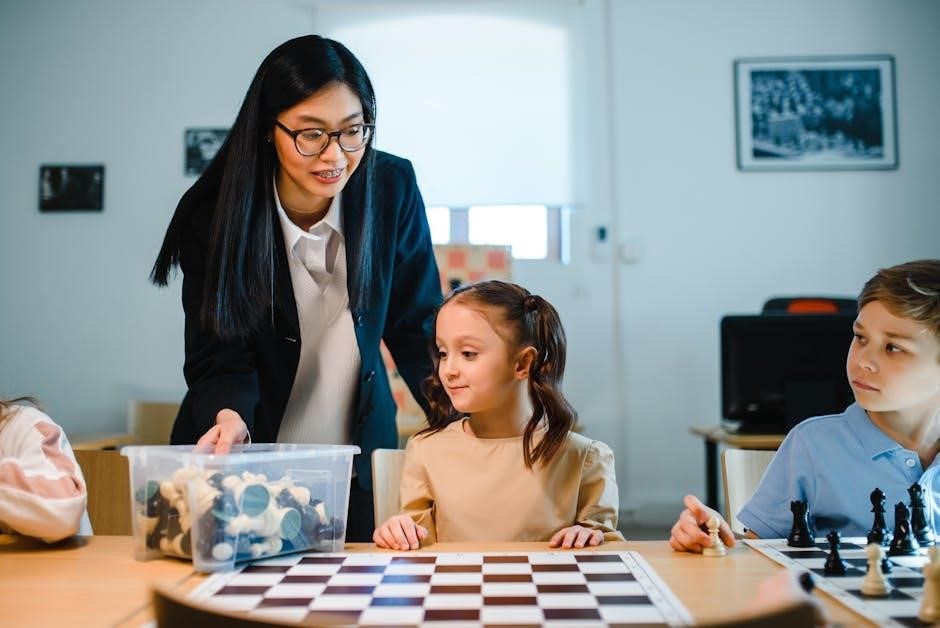
Cultural Considerations in Special Education
Cultural considerations in special education involve tailoring teaching strategies to students’ diverse backgrounds, ensuring inclusivity and respect for their cultural identities and experiences in the classroom.
Addressing Diverse Cultural Backgrounds
Addressing diverse cultural backgrounds in special education requires understanding students’ unique cultural identities and incorporating culturally responsive practices. Teachers must recognize how cultural differences influence learning styles, communication, and behavior. By tailoring strategies to reflect students’ backgrounds, educators foster an inclusive environment that respects and values diversity. This includes adapting materials, engaging families, and promoting cross-cultural understanding. Culturally responsive teaching ensures equitable access to education, helping students feel valued and supported. Such approaches also encourage collaboration among students from varied backgrounds, enriching the learning experience for everyone. Addressing cultural diversity is essential for creating a truly inclusive and effective special education program.
Culturally Responsive Teaching Practices
Culturally responsive teaching practices involve understanding and integrating students’ cultural backgrounds into the learning process. These strategies emphasize respect for diverse cultures, languages, and experiences. Teachers adapt instruction to reflect students’ identities, fostering a sense of belonging. This includes using multicultural resources, incorporating students’ languages, and connecting lessons to their lived experiences. Additionally, educators collaborate with families and communities to align teaching methods with cultural values. By promoting cultural awareness and sensitivity, teachers create an inclusive environment that supports the social and academic growth of all students, particularly those with special needs. This approach ensures equitable education, celebrating diversity as a strength.
Effective teaching strategies empower educators to support special needs students, fostering inclusive education and promoting academic, social, and emotional growth for diverse learners.
Summarizing Effective Teaching Strategies
Effective teaching strategies for special needs students involve differentiated instruction, co-teaching, and behavioral interventions. These approaches ensure personalized learning experiences, fostering academic and social growth. By leveraging assistive technology and adapting curriculum, educators create inclusive environments. Preparation, organization, and task analysis are critical for addressing diverse needs. Collaborative efforts between teachers and support staff enhance outcomes, while culturally responsive practices promote equity. Recognizing student strengths and promoting self-esteem further empower learners; Ultimately, these strategies support the holistic development of special needs students, preparing them for future independence and success in various settings.
Future Directions in Special Needs Education
Future directions in special needs education emphasize the integration of advanced technologies and personalized learning strategies. Expanding the use of assistive technologies, such as adaptive software and hardware, will enhance accessibility for students with diverse needs. Professional development for educators, focusing on inclusive practices and cultural responsiveness, is critical. Policies promoting equitable resource distribution and collaborative teaching models will further support inclusive classrooms. Research on evidence-based interventions and data-driven decision-making will guide innovation. By prioritizing student-centered approaches and fostering partnerships between schools and communities, special needs education can evolve to better meet the unique requirements of all learners, ensuring their long-term success and independence.
